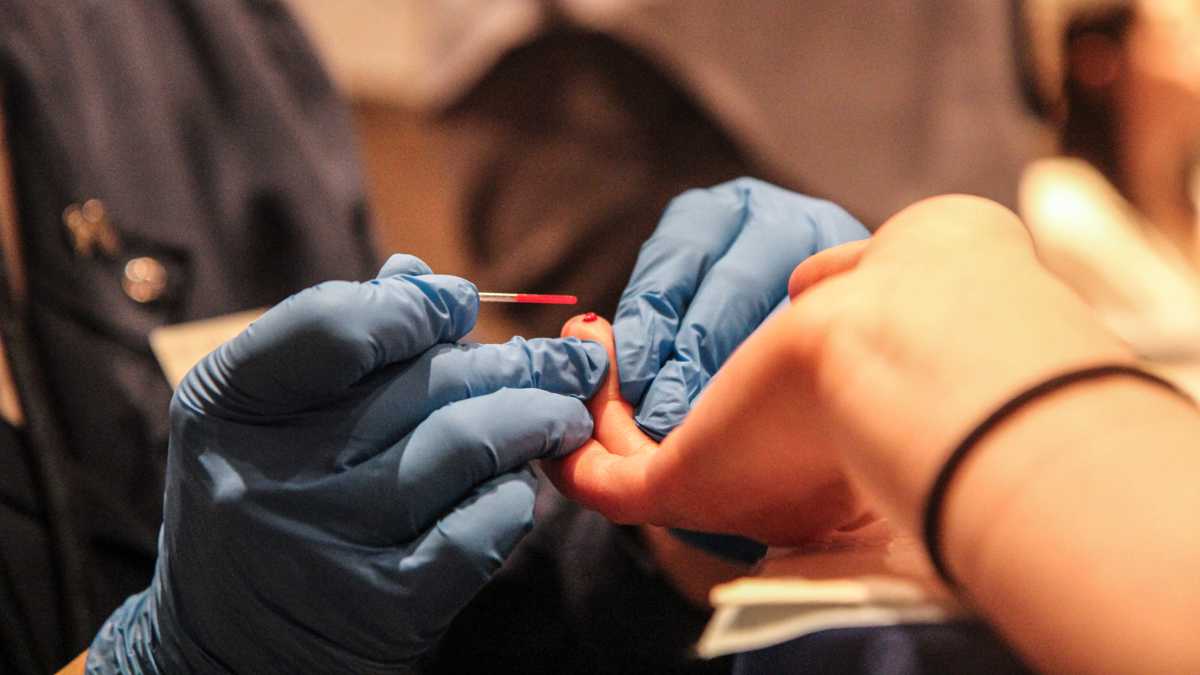Explainer: How the state monitors a child who has elevated blood lead levels

Blood is drawn for lead testing at a health fair in a county affected by Hurricane Sandy. (Kimberly Paynter/WHYY)
It depends on how much lead is in the child’s blood.
In Pennsylvania, only 26 percent of children between the ages of one and two are tested for lead. For children under age seven, it’s only 14 percent.
That’s despite the fact that lead can cause children permanent learning disabilities, behavioral problems, and drops in IQ, scientists say.
The state is considering legislation that would mandate lead testing for all children of a certain age.
But in the meantime, what happens when a child is tested and has elevated blood lead levels? What does the state do?
The threshold
Until recently, the Centers for Disease Control and Prevention set a threshold — 10 micrograms of lead per deciliter of blood — at which a child is considered to have “elevated blood lead levels.”
Keep in mind, that doesn’t mean lead levels under 10 µg/dl are safe. In fact, the CDC says the opposite. But the threshold is a guideline at which doctors should definitely be paying attention.
In 2012, the CDC changed that threshold to 5 µg/dl.
Pennsylvania still goes by the old standard when it comes to monitoring children.
So if a child is tested for lead at his or her doctor’s office, and the blood test comes back with a result greater than 10 µg/dl, the state steps in.
The monitoring
First, the Department of Health assigns a community health nurse to each kid. Typically the nurse doesn’t go into a child’s home; instead he or she will call the family on the phone and send information via mail.
The nurses advise families on how to prevent exposure to lead, primarily from lead paint. They may recommend that a family cover up spots of chipping paint, for instance, mop the floors regularly, and make sure a child is getting enough calcium, iron, and vitamin C, which can lower the amount of lead that’s absorbed into the body.
After that, the child is supposed to keep going to his or her doctor’s office and being tested for lead.
How long this goes on
The state stops monitoring a child when:
The family has figured out what caused the lead poisoning and fixed the problem or moved; and
Every other child under six living in the house has been tested.
And one of these two scenarios happens:
The child has two finger-stick blood tests, several months apart, that show blood lead levels below 10 µg/dl, or one venous blood test with that level and a physician who says there’s no more monitoring needed.
The child has three confirmed blood lead levels below 15µg/dl drawn three months apart.
The monitoring can also be ended at the request of a child’s doctor or family. And the state stops trying if it can’t locate the family four times.
Extreme levels
If a child’s blood lead levels are persistently above 15µg/dl, the community health nurses call in the state’s Lead and Healthy Homes Program to do environmental lead testing in the home. The environmental investigators ask the family about the age of the house, what cookware they use, where they work and spend time, as well as whether the child puts objects in his or her mouth.
If a child’s levels are very high, doctors sometimes use a treatment called chelation therapy, injecting the child with a medication that binds to the metal in the blood so it can be excreted in urine. But that therapy wouldn’t reverse some of the damage that’s been done.
WHYY is your source for fact-based, in-depth journalism and information. As a nonprofit organization, we rely on financial support from readers like you. Please give today.


